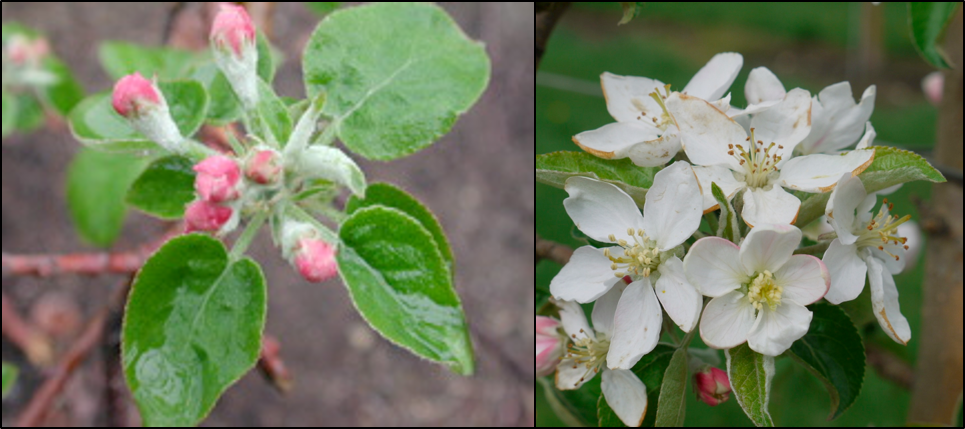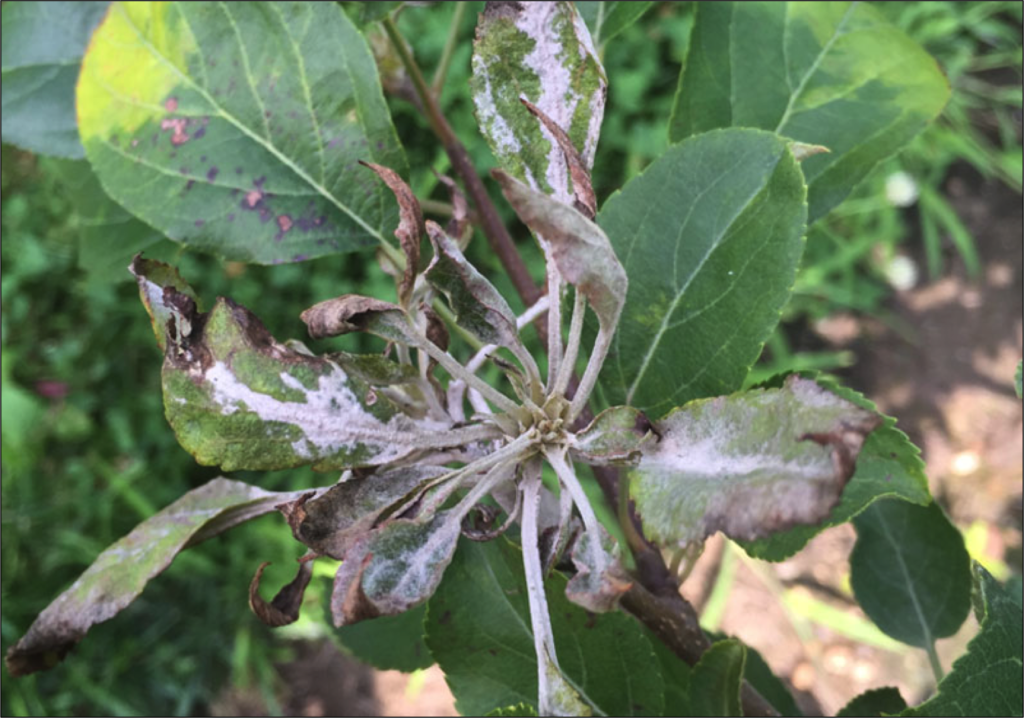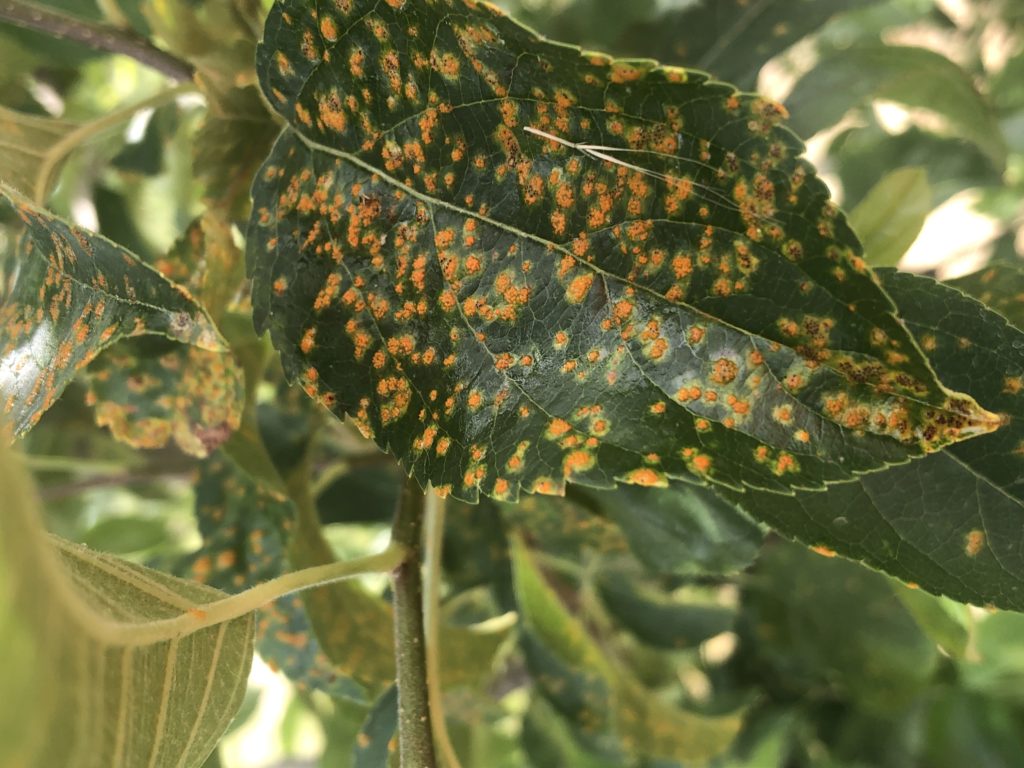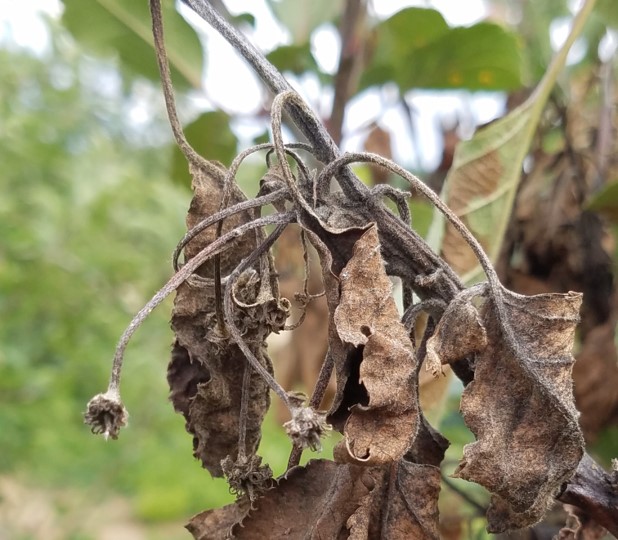2020 Apple Disease Update: Pink Bud and Bloom
go.ncsu.edu/readext?667976
en Español / em Português
El inglés es el idioma de control de esta página. En la medida en que haya algún conflicto entre la traducción al inglés y la traducción, el inglés prevalece.
Al hacer clic en el enlace de traducción se activa un servicio de traducción gratuito para convertir la página al español. Al igual que con cualquier traducción por Internet, la conversión no es sensible al contexto y puede que no traduzca el texto en su significado original. NC State Extension no garantiza la exactitud del texto traducido. Por favor, tenga en cuenta que algunas aplicaciones y/o servicios pueden no funcionar como se espera cuando se traducen.
Português
Inglês é o idioma de controle desta página. Na medida que haja algum conflito entre o texto original em Inglês e a tradução, o Inglês prevalece.
Ao clicar no link de tradução, um serviço gratuito de tradução será ativado para converter a página para o Português. Como em qualquer tradução pela internet, a conversão não é sensivel ao contexto e pode não ocorrer a tradução para o significado orginal. O serviço de Extensão da Carolina do Norte (NC State Extension) não garante a exatidão do texto traduzido. Por favor, observe que algumas funções ou serviços podem não funcionar como esperado após a tradução.
English
English is the controlling language of this page. To the extent there is any conflict between the English text and the translation, English controls.
Clicking on the translation link activates a free translation service to convert the page to Spanish. As with any Internet translation, the conversion is not context-sensitive and may not translate the text to its original meaning. NC State Extension does not guarantee the accuracy of the translated text. Please note that some applications and/or services may not function as expected when translated.
Collapse ▲ I thought a combined post on disease management for the pink and bloom stages was justifiable this week since for many in NC trees went from pink to 50% bloom in three days. Yes, despite the 80 deg. temps outside, it even caught the NC State University apple team by surprise. At this point, apple scab, powdery mildew, and cedar apple rust, and of course fire blight should be the main disease concerns in your orchard.
I thought a combined post on disease management for the pink and bloom stages was justifiable this week since for many in NC trees went from pink to 50% bloom in three days. Yes, despite the 80 deg. temps outside, it even caught the NC State University apple team by surprise. At this point, apple scab, powdery mildew, and cedar apple rust, and of course fire blight should be the main disease concerns in your orchard.
Apple Scab (Primary Infection)

 During this time and continuing through petal fall, ascospores (spores that overwintered primarily on leaf litter) will mature rapidly. Once “ripe”, these spores will be released during a rain fall. Therefore, any green tissue not protected is susceptible to infection. Given the high temperatures over the past few days, there likely was emergence new, unprotected tissue. Even if you sprayed late last week, you may want to consider a fungicide application early this week. At MHCREC in Mills River, we initiated the model when approximately 50% of the buds on ‘Gala’ reached green tip (March 13, 2020). As of March 31, ascospore maturity is at 55% and 5 infection events (1 combined) were forecasted in Henderson Cty, NC: March 16-17, March 18-19, March 21, March 24, and March 31. Keep in mind, March 31 is the date I’m posting this. If you have not gotten a fungicide on for scab, consider applying one no later than April 1 (tomorrow) with good kick-back activity. My suggestion would be a FRAC 3 such as Inspire Super, Indar 2F (high rate), or Cevya, OR a stand-alone SDHI (FRAC 7) with high intrinsic activity against scab such as Aprovia or Miravis.
During this time and continuing through petal fall, ascospores (spores that overwintered primarily on leaf litter) will mature rapidly. Once “ripe”, these spores will be released during a rain fall. Therefore, any green tissue not protected is susceptible to infection. Given the high temperatures over the past few days, there likely was emergence new, unprotected tissue. Even if you sprayed late last week, you may want to consider a fungicide application early this week. At MHCREC in Mills River, we initiated the model when approximately 50% of the buds on ‘Gala’ reached green tip (March 13, 2020). As of March 31, ascospore maturity is at 55% and 5 infection events (1 combined) were forecasted in Henderson Cty, NC: March 16-17, March 18-19, March 21, March 24, and March 31. Keep in mind, March 31 is the date I’m posting this. If you have not gotten a fungicide on for scab, consider applying one no later than April 1 (tomorrow) with good kick-back activity. My suggestion would be a FRAC 3 such as Inspire Super, Indar 2F (high rate), or Cevya, OR a stand-alone SDHI (FRAC 7) with high intrinsic activity against scab such as Aprovia or Miravis.
Powdery Mildew
If you had a powdery mildew problem in some of your blocks last year, it very well likely could come back with a vengeance this year. Last year, my observations were that powdery mildew in the region was more severe than we have previously given it credit for, particularly in highly susceptible cultivars such as Rome Beauty, JonaGold, and Honeycrisp. My suspicions are that russetting on fruit (on some cultivars) was to some extent caused by infections during the bloom-early fruit development period. Likely the first sign/symptom of powdery mildew in your orchard will be a white-silvery colored “flag” shoot that is stunted in growth:  As I mentioned above, if powdery mildew was not controlled well in your orchard last year, chances are you will likely have infection this year as well-as long as it is warm, humid, and fairly dry. This is because the pathogen overwinters in buds and infects new shoots as they emerge. If you do see flag shoots, your first line of defense is to get them out the tree and out of the orchard. Multi-site protectant fungicides such as captan, mancozeb, and ziram have marginal efficacy against powdery mildew, so if you are relying on these products for scab control during this period, be sure to slip a single-site fungicide into the mix. In general, stobilurins (FRAC 11) have performed well in our trials at MHCREC, but I’m hesitant to recommend them at this time of year because of GLS and Bitter Rot concerns later on. DMIs demonstrate a range in activity against powdery mildew (some work better than others) but I’ve generally observed excellent mildew control with Rally 40WSP, Procure, and Topguard. In general, SDHIs have performed “ok” in our field trials. Miravis (Syngenta’s new SDHI, which is highly efficacious against scab) has also performed quite well in powdery mildew trials conducted in NC and NY.
As I mentioned above, if powdery mildew was not controlled well in your orchard last year, chances are you will likely have infection this year as well-as long as it is warm, humid, and fairly dry. This is because the pathogen overwinters in buds and infects new shoots as they emerge. If you do see flag shoots, your first line of defense is to get them out the tree and out of the orchard. Multi-site protectant fungicides such as captan, mancozeb, and ziram have marginal efficacy against powdery mildew, so if you are relying on these products for scab control during this period, be sure to slip a single-site fungicide into the mix. In general, stobilurins (FRAC 11) have performed well in our trials at MHCREC, but I’m hesitant to recommend them at this time of year because of GLS and Bitter Rot concerns later on. DMIs demonstrate a range in activity against powdery mildew (some work better than others) but I’ve generally observed excellent mildew control with Rally 40WSP, Procure, and Topguard. In general, SDHIs have performed “ok” in our field trials. Miravis (Syngenta’s new SDHI, which is highly efficacious against scab) has also performed quite well in powdery mildew trials conducted in NC and NY.
Cedar Apple Rust (or Quince Rust or Hawthorn Rust)
 As mentioned in last week’s post, FRAC 3 (DMI fungicides) should be your go-to for rust control. You don’t need to break the bank either. Some of the older fungicides like Rally 40WSP will do a fine job against apple rusts. Other options included Topguard, Procure, Inspire Super, Cevya, and Indar 2F.
As mentioned in last week’s post, FRAC 3 (DMI fungicides) should be your go-to for rust control. You don’t need to break the bank either. Some of the older fungicides like Rally 40WSP will do a fine job against apple rusts. Other options included Topguard, Procure, Inspire Super, Cevya, and Indar 2F.
Fire Blight-Blossom Blight
All unprotected, open, and intact blossoms are susceptible to fire blight infection. Blossom blight initiated during the spring as the pathogen, overwintering in cankers, begins to ooze and is disseminated to open flowers, primarily by rain splash or by insects. Upon arrival to an open blossom, bacterial multiplication occurs on the stigmatic surface of the flower, provided that enough heat units have accumulated to support reproduction. At this point the flower is not considered infected and the presence of the bacteria on the stigmatic surface presents an ideal time for management with bactericides. Even the infection of a few blossoms can set the stage for catastrophic losses later in the season, due to the systemic movement of the pathogen through xylem tissue.




